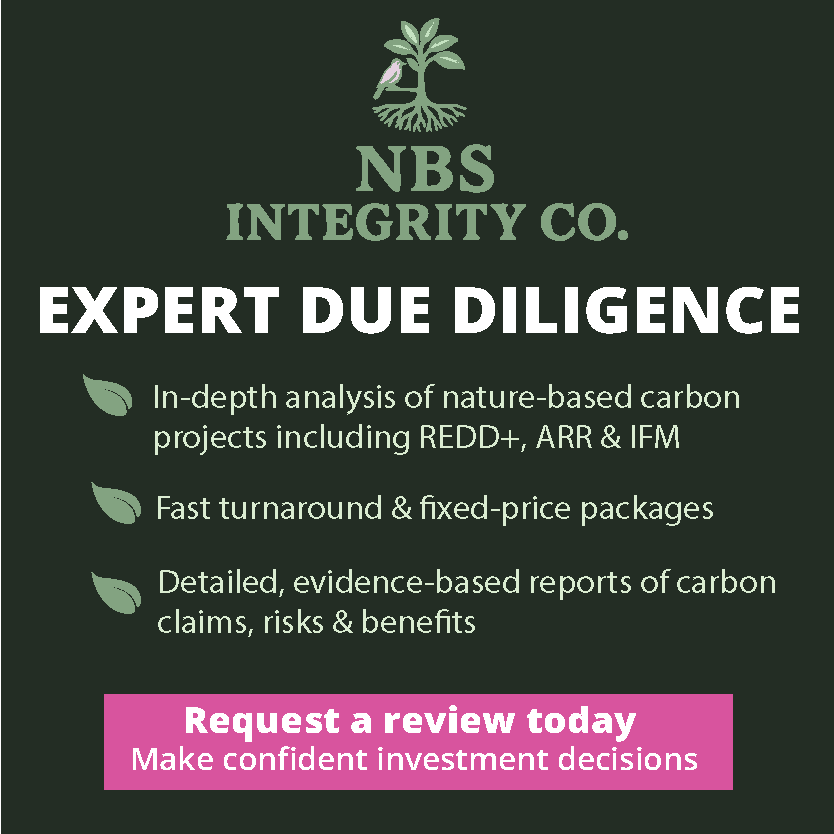By Robin Green, Head of Product, Carbonplace
We need climate finance fast to keep 1.5C alive
As we turn the tide on the ongoing climate crisis, speed is vital. Carbon credits are widely recognised as one of the solutions as companies move towards decarbonisation, yet demand is faltering. While businesses see the importance of mitigating their climate impact by investing in the carbon markets, this is not translating into growth in the volume of carbon credits being bought and retired by companies.
The suppressed demand should not be a surprise with the market lacking the consistent offer of trust and integrity to ensure investments represent credible climate action. Last week, an investigation claimed that over 90% of forest carbon credits assessed likely don’t represent real emission reductions.
While the investigation’s methodology has since been questioned, the reality is that the carbon markets are a very complex and nuanced space. Buyers often have difficulty navigating different standards, finding price transparency, or defining high-quality carbon credits. For sellers, this limits access to finance and raises the cost of verification for small project developers. These obstacles impede the flow of capital – what is the incentive for businesses to channel finance to projects?
With initiatives like the Voluntary Carbon Markets Integrity Initiative and the Integrity Council for the Carbon Markets due to publish guidance around demand and supply side integrity in 2023 respectively – much greater clarity and confidence will come.
In the meantime, to avoid these blimps becoming a perpetual malaise, the market needs to continue developing the necessary infrastructure to increase the supply of credible projects and incentivise market participation.
Integrity and trust are vital along the way.
Building trust in carbon markets is partly about confidence in the integrity of the outcome – that the project does what it says on the tin. But it’s also about trust in the process – for example, ensuring that the carbon credit has been “retired” once you’ve paid for it, so it can’t be sold again to another buyer, or double counted against the emissions cuts of the country in which the project takes place.
And then there’s trust in the transaction. How can you be sure you’re paying a fair price? Can you trust the intermediary to pass on a reasonable proportion of that price to the project owner? Some brokers have been found to charge up to seven times the price they originally paid the project developers, many of whom are small landowners in the Global South. Reducing reliance on what can often be an opaque over-the-counter process through a common rule book for buyers and sellers could greatly improve the speed, scale, and transparency of carbon credit transactions.
The existing infrastructure of the global carbon market is not designed to keep pace with the growing demand for carbon credits. New transaction networks are needed that combine accessibility, transparency, and trust in a way that can help the carbon market drive large-scale investment for urgently needed global climate action.
The market needs to welcome innovation
New initiatives launched at COP27 include the Africa Carbon Markets Initiative (ACMI), which aims to generate $6 billion of revenue annually for clean energy and conservation by 2030. ACMI would achieve this by selling 300 million tonnes worth of CO2 offsets – 14 times the current carbon credits on offer from Africa. US climate envoy John Kerry also announced the Energy Transition Accelerator (ETA), a carbon offset plan to steer private finance into replacing coal with renewables in developing countries.
The innovations show the potential of the voluntary carbon market to drive a broad range of climate action – but they also demonstrate that as we build trust and integrity in the voluntary carbon market, it must adapt to continual and rapid innovation.
Carbonplace is one such initiative, a global carbon credit transaction network – developed by some of the world’s leading financial institutions, launching in 2023. The network’s technology will manage the carbon credit’s full lifecycle, from inception to retirement, to ensure reliable ownership records and reduce the risk of double counting. The existing, robust KYC/AML compliance frameworks of Carbonplace’s founding banks will ensure the transparency and security that buyers and sellers need in the transaction process. The result will be a rapidly scalable network open to financial institutions, exchanges, marketplaces, and registries looking to use more efficient settlement systems, as well as companies that want to buy and transfer carbon credits directly and securely.
It’s not just about carbon – livelihoods and biodiversity, and achieving justice matter too
It’s important to remember that the best carbon credits do a lot more than just sequester carbon. They deliver benefits such as protecting biodiversity and boosting local livelihoods, goals that are inextricably linked to the quest to mitigate climate change and can put power in the hands of the people on the ground.
The project that has recently issued Verra’s 1 billionth credit is a good example: the Chyulu Hills REDD+ Project in Kenya. The project is owned and managed by local Maasai communities and Kenyan institutions, and it provides long-term financing to maintain the ecological integrity of an iconic African landscape, covering more than 400,000 hectares in the Tsavo-Amboseli ecosystem. It reduces emissions from deforestation and forest degradation, protects high-value wildlife and biodiversity, and supports the development needs of Indigenous and local communities.
According to Samson Parashina, Maasai leader and chairman of the Chyulu Hills Conservation Trust: “the Maasai communities have been funded by the carbon credit revenue to develop a sustainable local economy based on protecting the natural environment while maintaining our cultural link to the land, building a better future for generations to come.”
Moving the market forward
Today’s climate finance obstacles are not insurmountable. But addressing them will require coordinated and determined action across the private sector to determine how we can leverage tools like the carbon markets for equitable climate outcomes.
Financial institutions have a responsibility to put their expertise, capital, and influence towards solutions like the carbon markets, so we can continue reducing climate risks. Initiatives like Carbonplace can bring the accessibility, trust, and transparency required for carbon markets to deliver the finance we need to keep alive the 1.5C temperature limit goal of the Paris Agreement.
Robin is Head of Product for Carbonplace. Prior to this Robin led Digital Markets Innovation within CIBC delivering new transformative technologies, with a particular focus on the tokenisation of Cash and Debt within Capital Markets. Prior to joining CIBC, he worked at Commerzbank, Merrill Lynch and Hewlitt Packard in solution delivery roles.
Any opinions published in this commentary reflect the views of the author(s) and not of Carbon Pulse.




